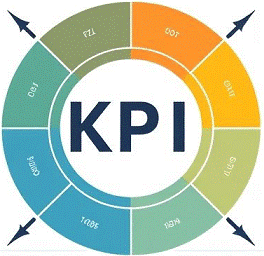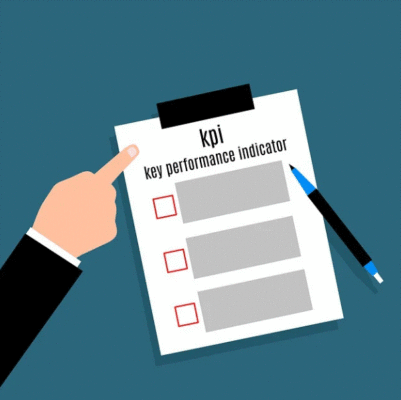If you cannot measure it, you cannot improve it. This simple truth is why Key Performance Indicators (KPIs) form the bedrock of successful business leadership.
For executives navigating complex organizations, KPIs are not just numbers on a dashboard – they are the critical navigation instruments that show whether you’re moving toward your strategic destinations or simply running in place.
What Exactly is a KPI?

A Key Performance Indicator (KPI) is a quantifiable measure used to evaluate how effectively an organization is achieving its key business objectives. Think of KPIs as your business’s vital signs – just as blood pressure and heart rate reveal human health, KPIs provide a realistic look at your organization’s health and performance.
Many executives confuse KPIs with general business metrics. Here is the crucial difference: while all KPIs are metrics, not all metrics are KPIs.
- KPIs are the vital few indicators that tie directly to your strategic goals. They are the measures that truly move the needle for your business.
- Metrics, meanwhile, measure the success of everyday business activities that support your KPIs.
For example, “website traffic” is a metric, but “visitor-to-customer conversion rate” is a KPI when you’re focused on growth.
KPIs vs. Metrics Comparison
| Aspect | KPI (Key Performance Indicator) | General Metric |
|---|---|---|
| Purpose | Measures progress toward strategic goals | Measures routine business activities |
| Scope | Organization-wide or department-wide strategic importance | Tracks specific processes or tasks |
| Example | “Net profit margin” for profitability | “Total revenue” or “Number of website visits” |
| Influence | Directly influences executive decisions | Provides context but doesn’t drive major strategy |
Why KPIs Matter for Strategic Leadership
As an executive, your time is your most valuable asset. KPIs protect this asset by focusing attention on what matters most. Their importance extends far beyond simple measurement.

KPIs keep your teams aligned and moving in the same direction by providing clear targets to shoot for.
They create a common language around success, ensuring everyone from the C-suite to front-line employees understands what excellence looks like. This clarity fosters accountability at all levels – when people understand how their performance is measured, they can take ownership of their contributions.
Perhaps most importantly, KPIs enable data-driven decision making. Rather than relying on gut feelings or past experiences, you can make strategic calls based on clear, relevant evidence of what is and isn’t working.
This evidence-based approach allows you to clearly see successes and failures so you can do more of what works and less of what doesn’t.
The forward-looking power of KPIs is equally valuable. A balanced KPI framework includes leading indicators (which predict future performance) alongside lagging indicators (which measure past outcomes) . This combination provides both early warning signals and confirmation of results, giving you time to adjust course before problems become crises.
Building Your KPI Framework: A Step-by-Step Guide
Developing effective KPIs requires both art and science. Follow this disciplined approach to ensure your KPIs deliver maximum insight.
Step 1: Start with Strategic Objectives
Your KPIs must stem directly from your organization’s most important goals.
If your strategic objective is “expand into new geographic markets,” your KPI shouldn’t be “reduce office supply costs.” Ask yourself: “What would indicate we’re making progress on this goal?” The answers become your KPI candidates.
Step 2: Apply the SMART Framework
Ensure each KPI is:
- Specific: Clearly defined and unambiguous
- Measurable: Quantifiable with available data
- Achievable: Realistic given your resources
- Relevant: Directly tied to strategic goals
- Time-bound: Associated with a specific timeframe
For example, instead of “grow sales,” a SMART KPI would be “grow sales by 10% next month.”
Step 3: Balance Leading and Lagging Indicators
Lagging indicators tell you what already happened (e.g., last quarter’s revenue), while leading indicators predict what might happen (e.g., sales pipeline value).
![]()
Using only lagging indicators is like driving while looking only in the rearview mirror. A balanced approach might pair “profit margin” (lagging) with “customer satisfaction scores” (leading) to give both historical and forward views.
Step 4: Assign Clear Ownership
Every KPI needs an owner responsible for tracking, reporting, and refining it. Without ownership, KPIs become everyone’s problem and no one’s priority.
Step 5: Plan for Regular Review
KPIs are not set in stone. As your business and market change, your KPIs may need to evolve. Schedule regular reviews to ensure they remain relevant and adjust targets based on performance.
KPI Examples Across Business Functions
Different departments contribute to organizational success in different ways, and their KPIs should reflect their unique focus areas. Here are examples executives should know:
KPI Examples by Business Function

| Business Function | Strategic KPI Examples | Why It Matters |
|---|---|---|
| Finance | Net profit margin, Operating cash flow, Return on Investment (ROI) | Measures financial health and efficient capital use |
| Sales | New qualified opportunities, Average order value, Sales growth rate | Tracks revenue pipeline and effectiveness |
| Marketing | Marketing Qualified Leads (MQLs), Conversion rates, Customer acquisition cost | Measures demand generation efficiency |
| Customer Service | Customer satisfaction (CSAT), First contact resolution rate, Net Promoter Score (NPS) | Indicates service quality and customer loyalty |
| Operations | Order fulfillment time, Inventory turnover, Process cycle time | Reveals process efficiency and resource use |
| Human Resources | Employee turnover rate, Employee satisfaction, Training effectiveness | Measures workforce health and engagement |
Avoiding Common KPI Pitfalls
Even with the best intentions, KPI initiatives can go wrong. Watch for these common mistakes:
- KPI Overload: One of the most frequent errors is tracking too many KPIs. When you measure everything, you measure nothing. Focus on the 5-7 most impactful indicators that truly reflect strategic progress. If you cannot easily remember your key KPIs, you have too many.
- Measuring the Measurable: Just because something is easy to measure doesn’t mean it’s important. Avoid the temptation to focus on readily available data rather than strategically relevant information. Always ask: “Will tracking this KPI actually help us make better decisions?”
- Setting and Forgetting: KPIs require regular review and occasional refinement. Market conditions change, strategies evolve, and what mattered last year may not matter today. Schedule quarterly KPI reviews to ensure they remain aligned with business priorities.
- Misalignment Across Teams: If department KPIs conflict, you create internal competition rather than organizational alignment. For example, if procurement is measured solely on cost reduction while operations is measured on quality, conflicts will arise. Ensure all team KPIs support overall business objectives.
Turning KPIs Into Actionable Insight
The ultimate purpose of any KPI is to drive better decisions and actions. To make this happen:
- Create Visual Dashboards: Transform raw numbers into intuitive visual displays that make patterns and trends immediately obvious. A well-designed dashboard allows executives to grasp complex information quickly.
- Establish Regular Review Rhythms: Make KPI discussion a standard agenda item in management meetings. Use these sessions not to assign blame for poor results, but to understand root causes and brainstorm solutions.
- Connect KPIs to Decisions: For each KPI, explicitly define what actions will be taken if performance deviates from targets. For example, “If customer satisfaction drops below 90%, we will initiate our customer recovery protocol.” This ensures KPIs directly influence operational decisions.
- Cascade Throughout Organization: While executives focus on strategic KPIs, each department and team should have their own KPIs that roll up to support the organizational goals. This creates alignment from top to bottom.
Moving Forward with KPIs
The journey to KPI excellence begins with a simple but powerful recognition: what gets measured gets managed. By focusing on the right key performance indicators, you transform abstract strategy into concrete, measurable progress.

Start today by identifying the 2-3 most critical outcomes you need to achieve this quarter.
- What would indicate you’re making meaningful progress?
- How would you measure that progress?
- Who would own each measure?
Your answers to these questions form the foundation of a KPI framework that will sharpen your focus, align your team, and drive the results that matter most to your business.
Remember, KPIs are not about monitoring every aspect of your business – they are about illuminating the path to your most important destinations. Choose them wisely, implement them consistently, and let them guide your strategic decisions.






























